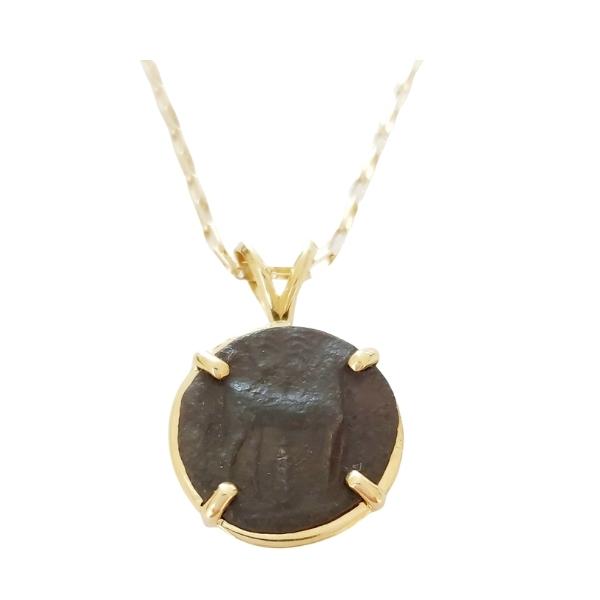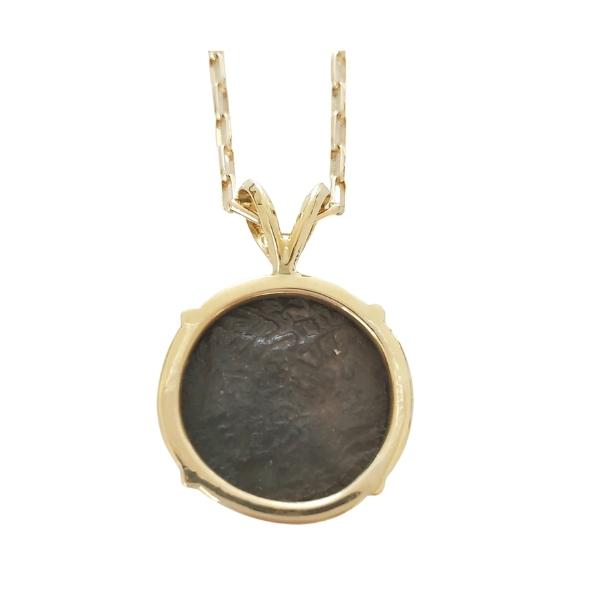


Greek Bronze Carthage Horse 3rd Century BC (040)
This ancient Greek bronze coin features an elegant horse with a date palm in the background, typical of Carthaginian coinage. The reverse side of the pendant features the goddess Tanit wearing a wreath of corn.
Size: 16mm
Hand-fabricated 18kt recycled gold mount.
One of a kind with a Certificate of Authenticity.
Chain not included; available separately. See Chains
Dated: late 4th - early 3rd century BC
Greek bronze coin from Zeugitania, Carthage. (Coastal North Africa, Tunisia)
Choose options



This ancient Greek bronze coin features an elegant horse with a date palm in the background, typical of Carthaginian coinage. The reverse side of the pendant features the goddess Tanit wearing a wreath of corn.
Size: 16mm
Hand-fabricated 18kt recycled gold mount.
One of a kind with a Certificate of Authenticity.
Chain not included; available separately. See Chains
Dated: late 4th - early 3rd century BC
Greek bronze coin from Zeugitania, Carthage. (Coastal North Africa, Tunisia)
